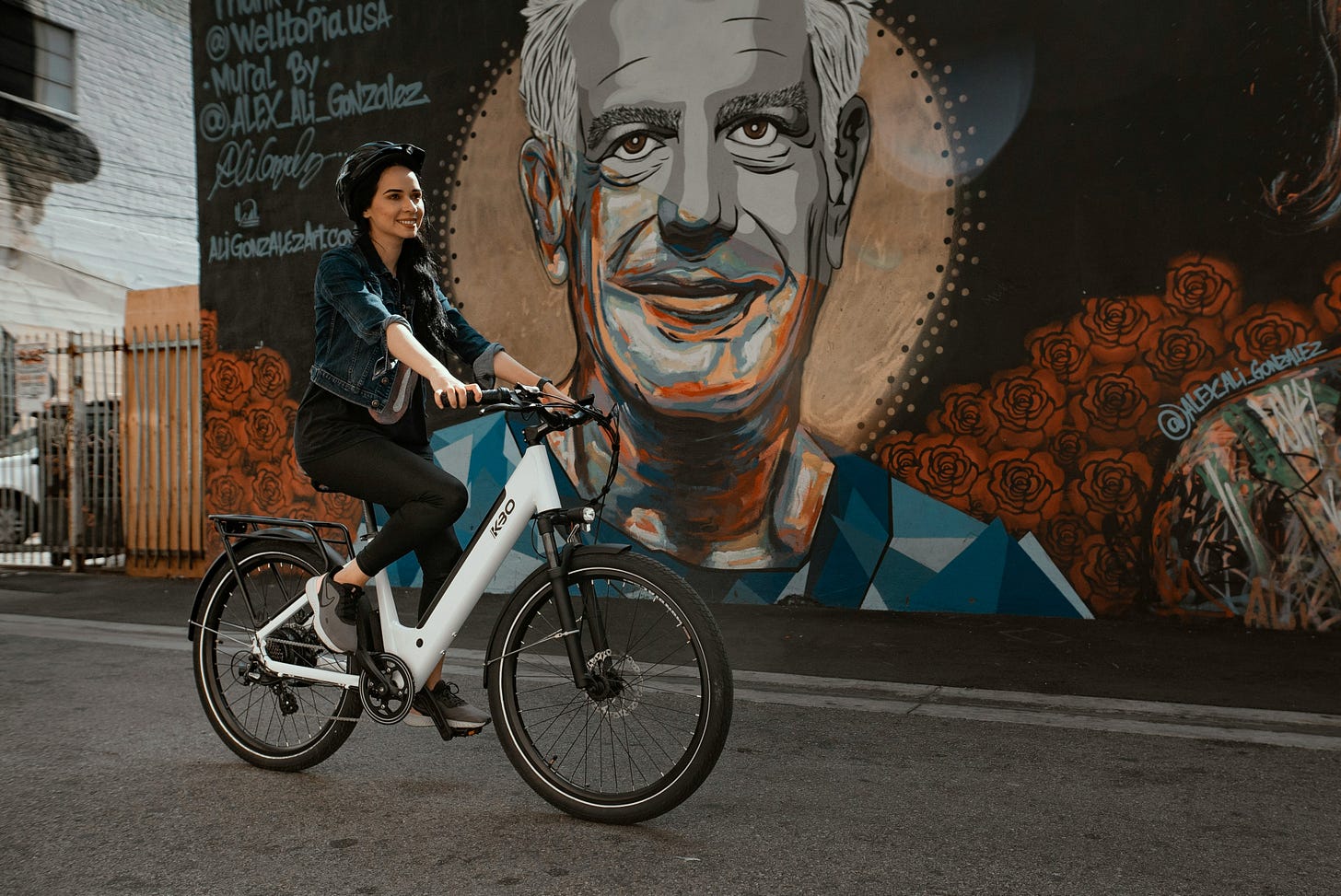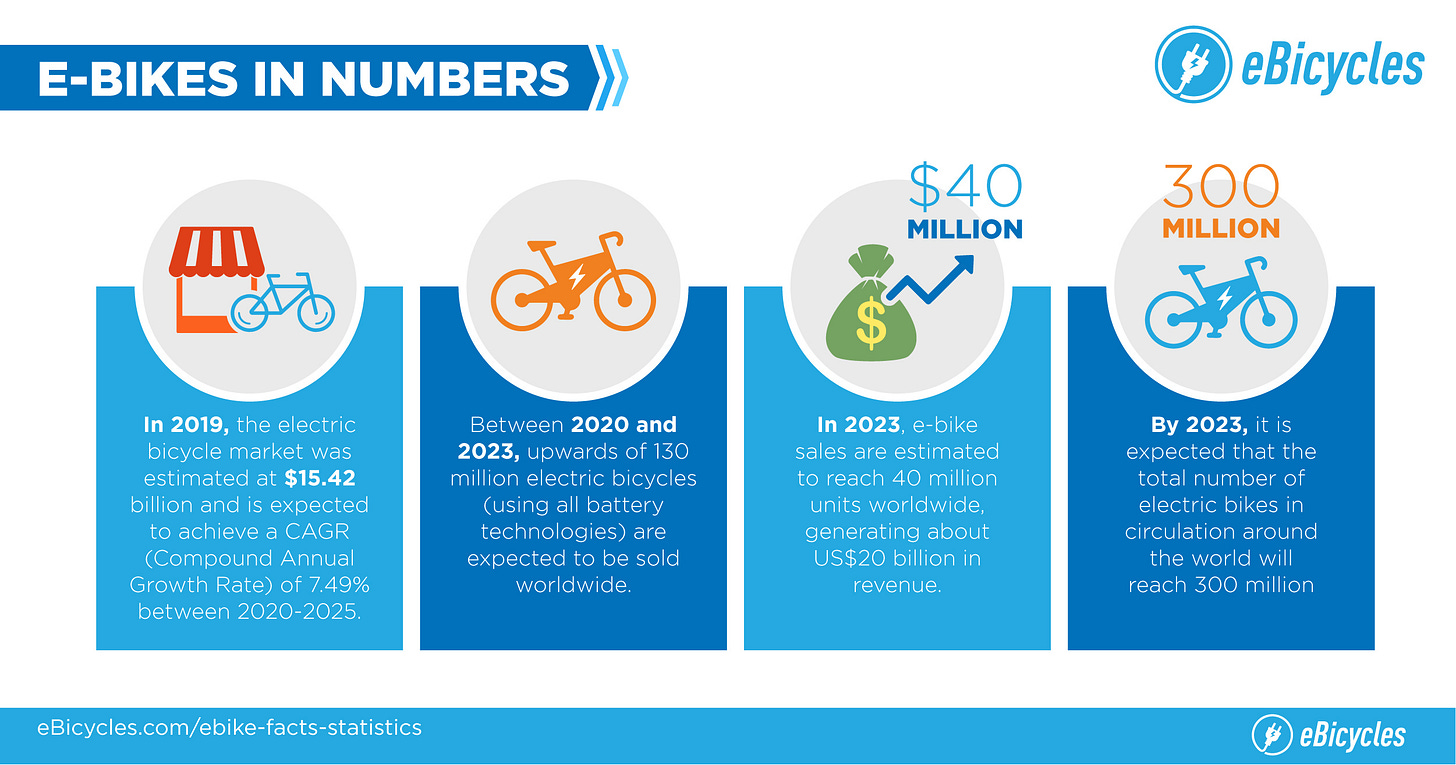E-bike safety, the laws, and enforcement
The time has come to educate and license cyclists on e-bikes
The number of e-bikes on roads and trails is growing fast!. Sales of e-bikes in the United States were just shy of 2 billion USD in 2022 and are expected to grow 15.6% annually from 2023 to 2030. Americans have embraced the e-bike.
E-bikes appeal for a variety of reasons. Daily commutes are more economical. The outdoors and recreation are open to more than the Lycra-clad crew. The ride continues for the aging cyclist. I saw an e-bike years in my future. That changed when an e-bike caught my eye. I have no regrets. It added another dimension to my cycling.
Riding an e-bike comes with being a responsible, courteous, safe cyclist. E-bike newbies often do not see themselves as cyclists. They have no to limited exposure to cycling safety and bicycle laws. This leads to conflict and accidents with fellow cyclists, pedestrians, and traffic.
Bicycles are seen as vehicles in bicycle laws and must obey all traffic laws. Ohio Department of Transportation Bicycle, Pedestrian & Micromobility Law Guide summarizes the rules of the road for bicycles and cycling. This includes where an e-bike can be operated based on it being a class 1, class 2, or class 3.
The Ohio Revised Code dictates e-bikes be labeled by class, top speed, and wattage. E-cyclists’ responsibilities are detailed by locations permitted and state and local laws that permit and limit these locations. The penalties for not adhering to these laws are detailed.
Are e-bike laws being actively enforced? I think not. Cars and trucks are targets of traffic enforcement on streets and highways. Counties, cities, and park districts do not have the resources to patrol trails. I assume the e-bike class is questioned when an e-bike is involved in an accident or injury,
It is time to evaluate the effectiveness of how e-bikes are regulated by the law. It is based primarily on the e-bike class. These laws assume a more powerful e-bike is unsafe. This is true in some ways but lacks factoring in the knowledge and on-bike experience of the e-cyclist.
Cyclists can exceed 28 mph by pedaling. Class-3 e-bikes are limited to 28 mph. All cyclists need to understand the consequences of speed. E-bike laws limited to class do not take factors beyond the maximum power and speed into account.
An interesting solution to regulating e-bikes involves education, licensing, and enforcement. Cyclists are not licensed after passing exams of basic traffic laws as are auto, truck, or motorcycle drivers. The time has come to license e-bike cyclists. E-bike sales are expanding. Many e-cyclists are not cycling-savvy and aware of the power at their fingertips.
A bill was introduced in the California legislature creating licensing and education requirements for the operation of an e-bike. The bill requires an online written test and a state-issued photo ID. Persons under 12 years old would be prohibited from riding e-bikes. It would establish an e-bike training program and license including more specifics on the classes and types of e-bikes.
Two California cities adopted ordinances that include an option to take a safety course when a cyclist receives a bicycle or e-bike traffic citation. Pairing the California bill requiring licensing and education with a program educating offenders improves the safety and safe operation of e-bikes.
Laws on e-bikes and e-cyclists are new. They are often addendums to cycling laws. E-bikes are evolving and becoming something quite different than the traditional bicycle. The California regulations will spread across the country and evolve with time, experience, and technology.
Cycling in the United States is transforming with Active Transportation becoming commonplace. Cycling has been seen as recreational by most Americans. This is contrary to the worldview of cycling as a means of transportation and necessity. Laws must be changed to meet this trend, notably with the growth of e-bikes.
E-cycle safely!
Tom on the Trails





I got my first E-bike for Christmas so this post was very informative and timely!